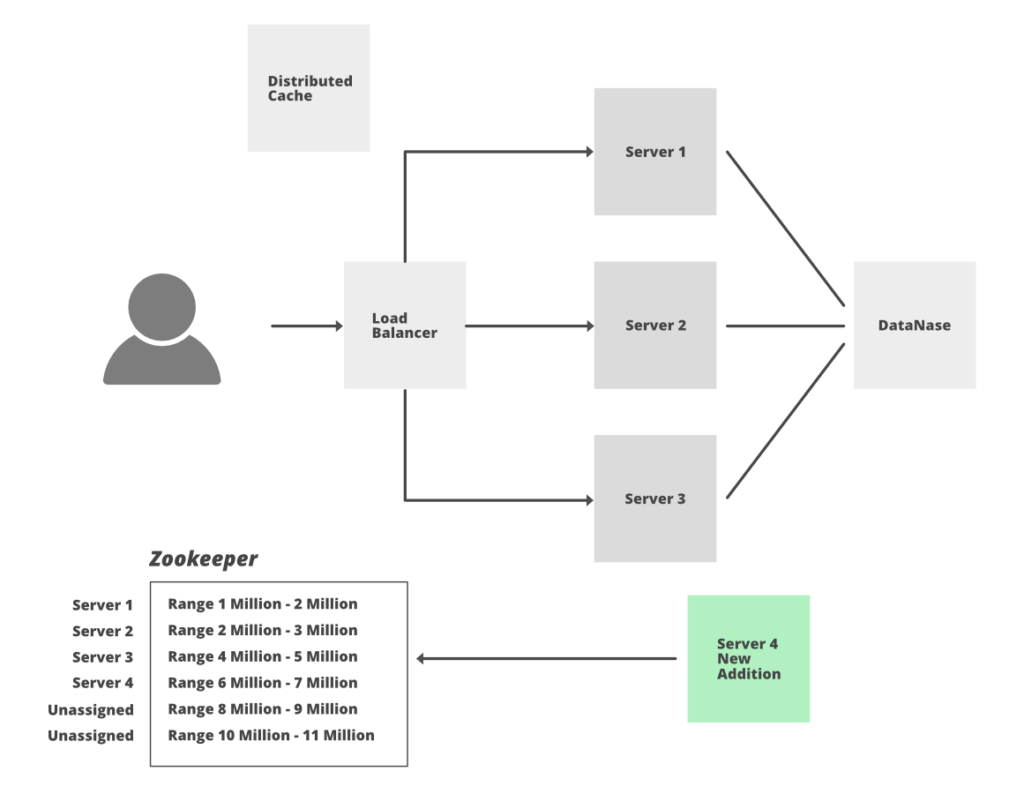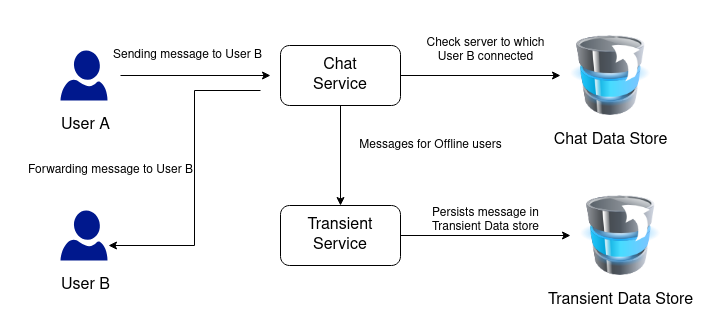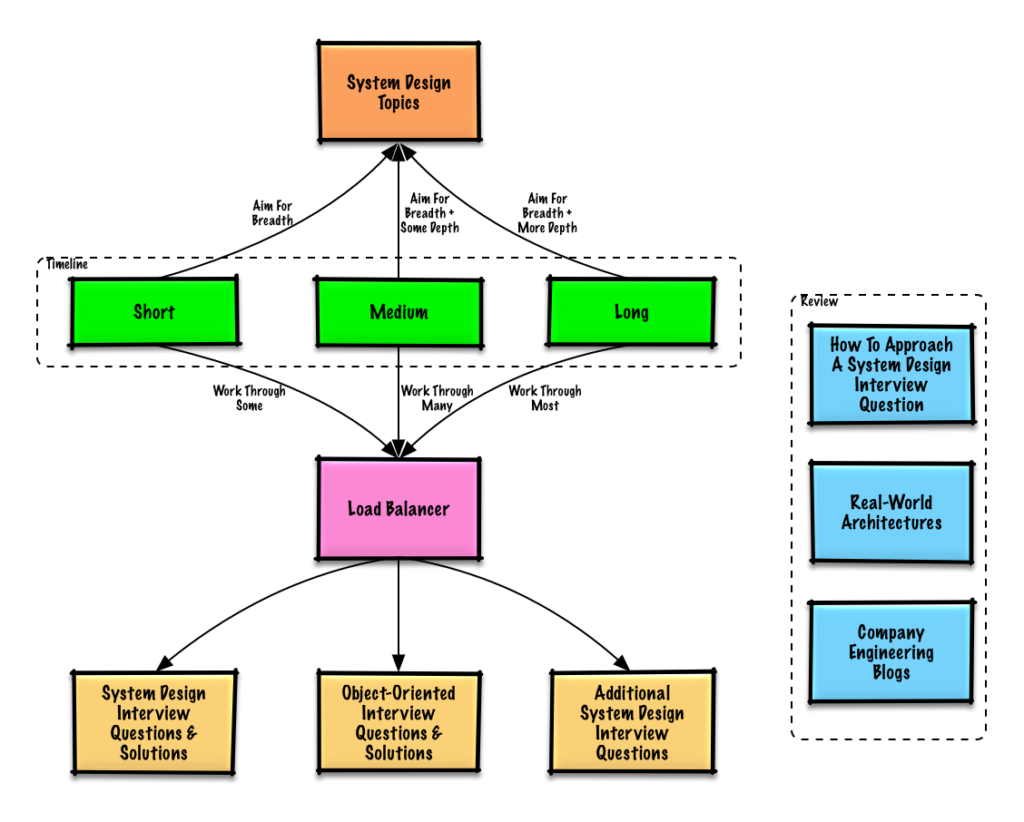In the process of software engineering interviews, the system design round has become an integral part of the evaluation. If you aspire to land your dream job at prominent tech giants, especially in senior engineering roles, you must articulate your approach to constructing a complex, highly scalable system. It is essential to note that there is no one size fits-all or definitive answer to design interview questions.
The system design round can be challenging for many candidates due to its open-ended nature and the lack of experience in building large-scale systems. This difficulty is not limited to junior and mid-level developers; even experienced developers may feel uneasy during this phase. To prepare effectively for this round, we suggest reading the blog “How to Crack the System Design Round in Interviews” Additionally, if you aim to excel in roles such as Architect, SDM, SDE, or SSE, you may benefit from exploring the “System Design – Live” course, which can optimize your approach to secure an exceptional job opportunity.
Throughout this discussion, we will explore common design interview questions frequently posed by interviewers in prominent tech companies. Moreover, we will address key points that you should consider while designing the system and explaining your solutions to the interviewer.
Design a URL Shortening Service (TinyURL)

When developing a URL shortening service like TinyURL, several key considerations come into play. The primary goal is to efficiently transform long URLs into unique, shorter aliases while ensuring seamless redirection to the original link when users access the short link.
At the API layer, a REST API serves as the interface between the client and the service. Load balancers play a crucial role in distributing incoming requests across multiple server instances to ensure scalability. The application layer is responsible for handling these requests. Worker threads or hosts generate the short URLs and store both the long and short URLs in a database.
For scalability, a distributed database system can be employed to handle the high influx of requests. The system should also support custom short URLs, click tracking, and the ability to delete expired URLs. Ensuring high availability involves redundancy and failover mechanisms to maintain service uptime.
Design a Global Live Video Streaming Service (YouTube/Netflix)

Creating a global video streaming service akin to YouTube or Netflix necessitates a robust architecture to handle vast amounts of data and simultaneous user interactions. Key components include content delivery networks (CDNs) like AWS and OpenConnect, a backend database, and clients for various devices.
Recording video stats requires a well-structured database schema to track metrics like view counts, up-votes, and down-votes. Real-time comments can be achieved using messaging queues or WebSocket connections. The OC-Clouds assist in content distribution, reducing latency for users across different regions.
Design a Global Chat Service (Messenger/WhatsApp)

When designing a global chat service such as Facebook Messenger or WhatsApp, several aspects need attention. One-on-one messaging can be achieved through real-time communication protocols, while group chats involve additional logic to manage multiple participants.
Delivered and read status indicators can be implemented through message acknowledgments. For offline users, message queuing and push notifications ensure message delivery. End-to-end encryption enhances security and privacy. Handling media sharing entails efficient storage and transfer of files, possibly using cloud storage solutions.
Design a Social Network + Message Board Service (Quora/Reddit/HackerNews)

Creating a social network with message board features involves catering to user engagement and content sharing. Robust statistics tracking allows monitoring answer views, up-votes, and down-votes. Implementing a follow feature lets users stay updated on specific users or topics.
A news feed generation algorithm displays relevant content to users, considering their interests and followed topics. The system’s architecture should ensure fast and efficient retrieval of posts and comments to maintain a seamless user experience.
Design a Search Typeahead Service
Developing a search typeahead service demands real-time responsiveness and efficient data management. Storing previous search queries aids in predicting user intent. The system should refresh data to keep suggestions current and relevant.
Matching user input to existing data can be achieved through indexing and efficient search algorithms. Query volume should be handled by distributing load across servers. Criteria for choosing suggestions can consider factors like popularity, relevance, and user behavior.
Design a Global File Storage and Sharing Service (Dropbox/Google Drive/Google Photos)
Designing a file storage and sharing service involves ensuring seamless access and synchronization across devices. Users upload, view, search, share, delete, and download files, necessitating reliable data storage and retrieval mechanisms.
ACID properties ensure data integrity, while permission controls manage file sharing. Real-time synchronization updates changes across devices, and collaborative editing requires synchronization and version control mechanisms. The service should accommodate large file sizes and offer efficient search capabilities.
Design a Web Crawler Service
A scalable web crawler service collects vast amounts of web data efficiently. The approach involves discovering new web pages and prioritizing dynamic content. Domain-specific crawling rules prevent overloading a single domain.
The architecture can employ distributed crawling and parallel processing to enhance efficiency. Web pages can be ranked based on importance and recency, guiding the crawler’s focus. Throttling mechanisms prevent overloading target websites.
Design a Social Media Platform (Facebook/Twitter/Instagram)
Creating a social media platform for billions of users necessitates robust features and infrastructure. Privacy controls allow users to manage their content visibility. News feed generation algorithms curate relevant posts based on user interactions.
Support for features like direct messaging, mentions, tagging, and user following enriches user interactions. Scalability is crucial, requiring efficient data storage, retrieval, and distribution across a distributed architecture.
Design a Ride-Sharing Service (Uber/Lyft)
Designing a ride-sharing service involves a complex backend to manage user requests and driver dispatch. GPS and location data enable efficient matching of users and drivers. Maps and routing algorithms calculate ETAs and guide drivers.
Real-time updates of driver locations and efficient data storage for geographical data are essential. Microservices architecture enhances scalability, and a combination of databases like Postgres, Redis, and MySQL store user and ride information.
Design an API Rate Limiter (GitHub)
An API rate limiter ensures fair usage of resources and prevents abuse. It restricts the number of requests an entity can make within a specified time window. Distributed systems require synchronized rate limiting to maintain consistency.
Throttling mechanisms prevent excessive requests and protect system resources. Soft and hard throttling strategies balance service availability and user experience. Rate limiting applies across a group of servers to maintain uniform access controls.






